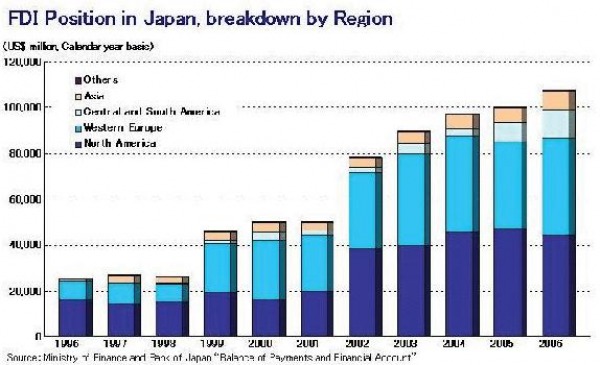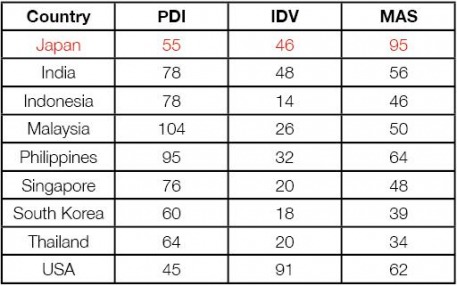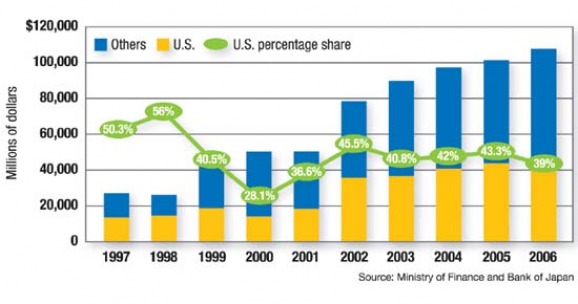Economics
Economic trend in Japan
The real GDP growth of Japan went down in 2007 and is around the 2%. Japan has still a higher GDP than Germany and China, but it is lower than the GDP of the United States. The growth rate of GDP and the GDP per capita are the lowest compared to these three countries. This could result in a less attractive market for companies in a particular industry.
Regarding to income classes in Japan, the largest group earns between 45,000 and 55,000 US dollars per year. More than 90 percent of the Japanese people have an income that is higher than 35,000 US dollars per year.
FDI in Japan

The United States of America has the highest FDI in Japan, followed by Western Europe. However, the FDI of Western Europe increased and the FDI of USA decreased in 2006. In the figur below, you can see the declining FDI share of the USA, while the total FDI increased in 2006. The share of Asia in FDI became larger in the same year.
Hofstede´s measures

Hofstede has found several dimensions of culture. The first one is Power Distance: the extent to which the less powerful members of institutions and organizations expect and accept that power is distributed unequally. Japan has a low power distance compared to the countries listed in the table above. Only the USA has a lower PD. The second dimension is individualism versus collectivism: the extent to which people are expected to stand up for themselves and to choose their own affiliations, or alternatively act predominantly as a member of a life-long group or organization. Japan has a moderate level of collectivism; it is higher than India, but lower than other Asian countries. The third dimension is masculinity versus femininity: the extent to which the culture is based on male or female values. Japan is the most masculine culture in the world. This means that the culture values competitiveness, assertiveness, ambition, and the accumulation of wealth and material possessions.

